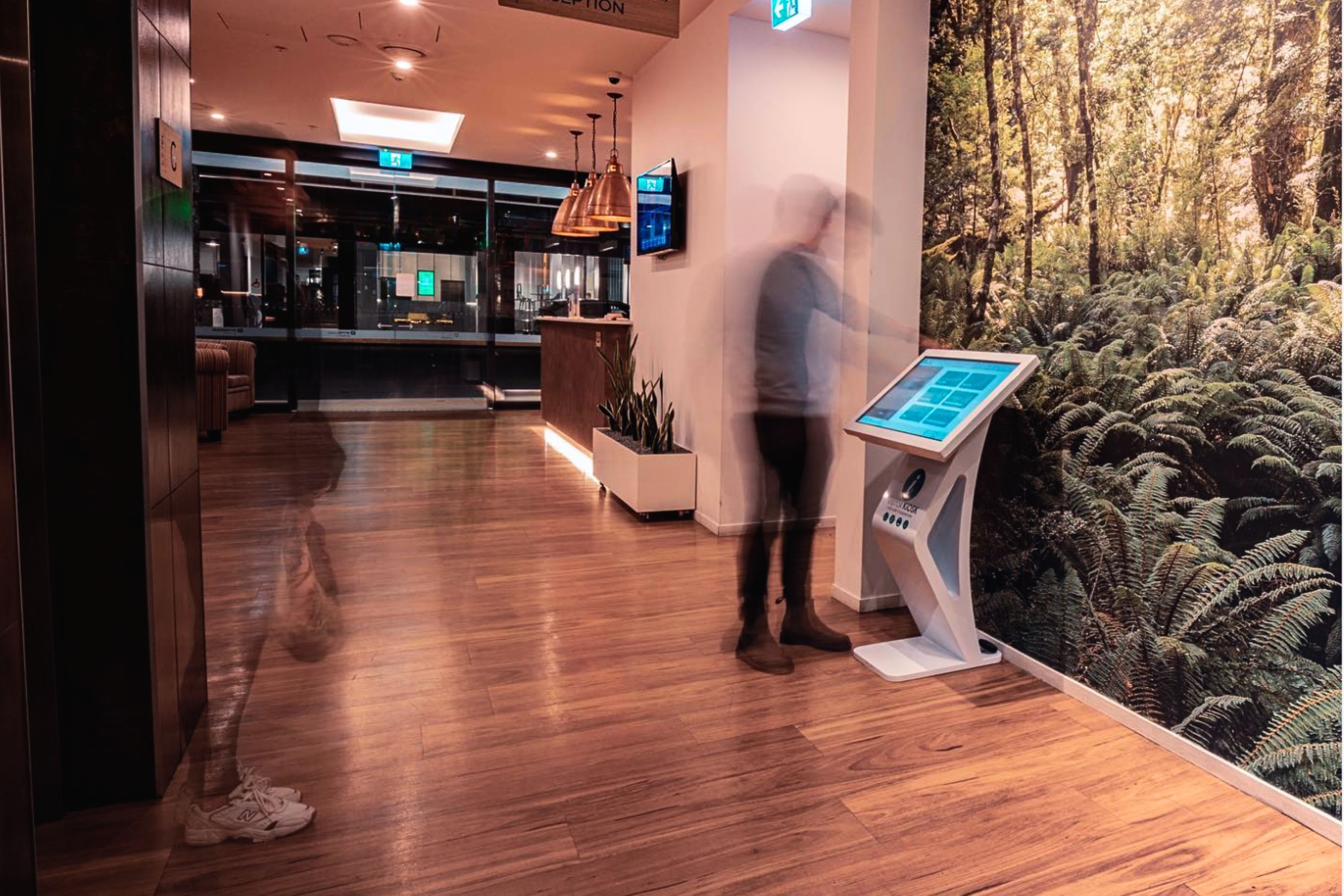Do you have a question? Want to learn more about our products and solutions, the latest career opportunities, or our events? We're here to help. Get in touch with us.
Do you have a question? Want to learn more about our products and solutions, the latest career opportunities, or our events? We're here to help. Get in touch with us.
We've received your message. One of our experts will be in touch with you soon.

Hotel lobbies and visitor centres have traditionally been jam-packed with pamphlets. Fliers for activities, restaurants, and attractions are stacked high – free to take, easy to drop, and inevitably ending up in the bin.
James Rolleston knew there had to be a better digital solution, and that’s how Visitor Kiosk was born.
With a Visitor Kiosk installed in a hotel lobby, tourist centre or airport, you can browse all the visitor attractions on a screen, watch promotional videos, and even make bookings directly from the kiosk. The intuitive touchscreen technology delivers a richer experience than any leaflet, while leaving a minimal footprint on the environment.
It was three years ago when the idea for Visitor Kiosk was born, and it took just one year for Rolleston to take the product from concept through to ‘ready to launch’.

A business partner who had worked successfully with Datacom in the past shared his recommendation with Rolleston, who got Datacom engaged in the very early stages of developing the kiosks.
Together, Datacom and Visitor Kiosks came up with optimal hardware and connectivity solutions. It was vital that the units were robust, wouldn’t overheat and were always able to connect. The connectivity issue meant overcoming a few hurdles in certain pockets of New Zealand where wifi wasn’t as strong.
“We worked up a new display concept using a 32-inch touchscreen monitor on a pedestal to digitise the paper leaflet display,” says Rolleston. “We came up with a hybrid model that would allow large scrolling ads, videos and leaflet-style content. Datacom made it happen from the technical point of view. We have a very good relationship with Datacom and they’ve supported us at every stage.”
With software from Intuiface as its foundation – and the right media players on board – the first Visitor Kiosk went live in Queenstown two years ago.
After a rocky post-pandemic start, the tourism industry is having a bumper year, so the Visitor Kiosks have had plenty of traffic. There are currently 30 Visitor Kiosks in operation. You can spot them in most of Queenstown’s well-known hotels and in both the Queenstown and Auckland airports.
Across the entire portfolio, the units display more than 36,000 ad rotations daily, to a potential audience of more than two million travellers. To date they’ve been operating seamlessly, proving physically robust, and popular with tourists.
“Most people are travelling with their smart phone or tablet, so they’re familiar with researching their travel online,” says Rolleston. “The Visitor Kiosk functions like an Apple device, with touch and swipe, QR codes, and links to websites and videos. It’s modernising the visitor information experience.”
Hotel operators are also appreciating the Visitor Kiosks, which reduce the burden on concierge staff and save costs on physical leaflets.
“We’ve heard from one hotel that has removed paper brochures. Paper leaflets are still going to have a place, but if you’re modernising your guest experience and moving with times, having a digital offering is quite appealing.”
“Our team loves working on projects like this, that are about helping our customers turn their ideas into reality and creating something that will give people better experiences and make things easier,” says Elias Billeh, Associate Director Digital Experience Platforms.
“As well as creating richer experiences for customers, digital experiences also provide an opportunity for New Zealand businesses to adopt a greener, more sustainable approach to the way they work.”
With their excellent track record over the past two years, Visitor Kiosks are now ready to go global. As well as further expansion into Auckland, Rolleston is looking at moving into the east coast of Australia, and potentially into the UK. Scotland might be the first international destination to get the technology, with a trial underway in Edinburgh in conjunction with a traditional leaflet display operator. In future, it may also be possible to have outdoor units that can withstand the elements.
“There is still a part of the market that likes to hold a paper brochure,” says Rolleston, “but that part of the market is diminishing as people’s digital skills improve. And younger generations are fully digital, as well as being more conscious about the environment. This is a cost-effective, sustainable, and dynamic marketing option.”